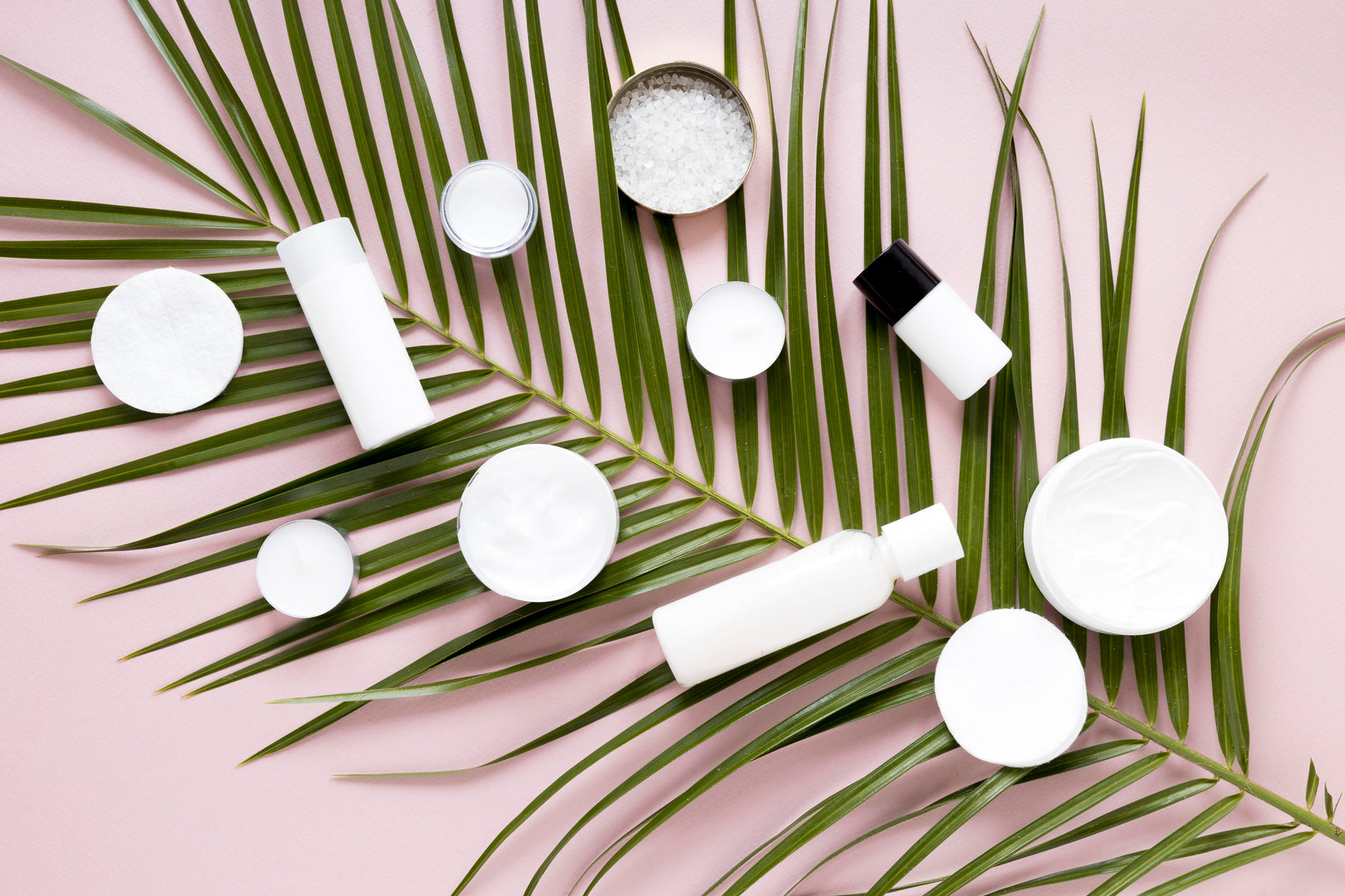Table of Contents
Introduction
Have you ever noticed that your skin feels parched even after applying moisturizer? Or perhaps you’ve scoured the aisles for a solution to your dry, flaky skin, unsure of which ingredients to trust? You're not alone. Many of us embark on a quest for the perfect skincare solution—one that offers hydration without irritation. In this journey, we often stumble upon ingredients that promise to be our saving grace. One such ingredient is glycerin, a powerful yet often underappreciated humectant.
As we navigate the complexities of skincare, understanding the role of glycerin can empower us to make informed choices about our routines. This blog post will explore the multifaceted benefits of glycerin in skincare, how it works, and how best to incorporate it into our daily regimen. We’ll also delve into its relevance in our product lineup at Moon and Skin, where we prioritize clean, thoughtful formulations for every phase of life.
Together, let’s unravel the world of glycerin and discover how this humble ingredient can enhance our skin health.
What is Glycerin?
Glycerin, also known as glycerol, is a natural compound that can be derived from both plant oils and animal fats. It appears as a clear, colorless, and odorless liquid with a syrupy consistency and a subtly sweet taste. But beyond its culinary and industrial applications, glycerin holds a significant place in the skincare realm.
Chemical Composition and Properties
Structurally, glycerin is composed of three carbon atoms, eight hydrogen atoms, and three oxygen atoms. This unique composition allows it to function as a humectant, drawing moisture from the environment and deeper layers of the skin to the surface. This property makes glycerin incredibly effective in keeping the skin hydrated.
How Glycerin Works in Skincare
As a humectant, glycerin attracts water molecules, pulling them into the stratum corneum—the outermost layer of the skin. This interaction not only hydrates the skin but also forms a protective barrier that helps prevent moisture loss. In essence, glycerin acts like a sponge, soaking up water and helping to maintain the skin’s hydration levels.
Interestingly, glycerin is often combined with occlusives—ingredients that create a barrier on the skin’s surface—to further lock in moisture. By pairing these two types of ingredients, we can achieve a more effective moisturizing effect.
The Benefits of Glycerin for Your Skin
Glycerin is a powerhouse ingredient with a multitude of benefits. Here are some of the key advantages it offers:
1. Intense Hydration
Glycerin excels at attracting and retaining moisture, making it a vital ingredient for those with dry skin. By improving the hydration levels in the skin, glycerin helps to alleviate dryness and flakiness, promoting a more supple and radiant complexion.
2. Improved Skin Barrier Function
By strengthening the skin's moisture barrier, glycerin helps protect against environmental irritants and pollutants. A robust skin barrier prevents moisture from escaping, making it essential for maintaining healthy skin.
3. Accelerated Healing
Glycerin has been shown to support the skin’s healing processes. It can aid in the recovery of wounds and prevent the formation of scars by promoting proper skin cell maturation. This makes it an excellent choice for those dealing with irritated or damaged skin.
4. Non-Irritating and Gentle
Glycerin is well-tolerated by all skin types, including sensitive skin. Its gentle nature means it can hydrate without causing irritation or breakouts, making it suitable for those with acne-prone skin.
5. Enhanced Absorption of Other Ingredients
Glycerin helps improve the penetration of other active ingredients in your skincare products, allowing them to work more effectively. By incorporating glycerin into your routine, you can maximize the benefits of your favorite serums and moisturizers.
Can Glycerin Irritate My Skin?
While glycerin is generally safe for most skin types, it’s worth noting that in extremely low humidity conditions, glycerin can draw moisture from the skin rather than into it. This can potentially lead to dehydration if used in its pure form. For this reason, we recommend using products that contain glycerin as an ingredient rather than applying it directly.
If you notice any signs of irritation, such as redness or itching, discontinue use and consult a healthcare professional. It’s always a good idea to patch-test new products, especially if you have sensitive or reactive skin.
How to Incorporate Glycerin into Your Skincare Routine
Incorporating glycerin into your skincare routine is easy, and the benefits can be felt almost immediately. Here’s how:
Step 1: Start with a Clean Slate
Begin your routine with a gentle cleanser to remove impurities and prepare your skin for hydration. We recommend our Superfood Cleanser, which utilizes HydroProtein Technology to nourish and cleanse without stripping your skin of its natural moisture.
Step 2: Apply a Glycerin-Infused Serum
Next, enhance your hydration with a serum that contains glycerin. Our Stem Cell C Serum is an excellent choice, utilizing advanced plant-cell technology to brighten, hydrate, and protect your skin.
Step 3: Lock in Moisture
After applying your serum, follow up with a moisturizer that contains glycerin. Our Hyaluronic Brightening Moisturizer is an ideal option, as it combines glycerin with hyaluronic acid to provide intense hydration while helping to brighten your complexion.
Step 4: Use Regularly
For optimal results, incorporate glycerin-containing products into your routine both morning and night. Consistency is key to reaping the long-term benefits of hydration and skin barrier support.
The Science Behind Glycerin
Glycerin's efficacy as a skincare ingredient is backed by research. A study published in the Journal of Dermatological Science in 2016 highlighted glycerin as one of the most effective humectants available, outperforming other common moisturizing agents like hyaluronic acid and propylene glycol.
Moreover, the American Academy of Dermatology Association recognizes glycerin for its ability to hydrate the outer layer of the skin, enhance skin barrier function, and improve overall skin health.
Frequently Asked Questions (FAQ)
What is glycerin?
Glycerin, or glycerol, is a clear, odorless liquid that acts as a humectant, drawing moisture into the skin.
Is glycerin good for your skin?
Yes, glycerin is excellent for all skin types, providing hydration, improving skin barrier function, and accelerating healing.
Can glycerin irritate my skin?
While generally safe, glycerin can draw moisture away from the skin in low humidity, potentially leading to dehydration if used in its pure form.
How do I use glycerin on my face?
Use glycerin-infused products like cleansers, serums, and moisturizers. Apply them consistently for optimal hydration and skin health.
Where can I find products containing glycerin?
You can find glycerin in many skincare products, including our Best Sellers, which feature our most effective formulations.
Conclusion
As we’ve explored, glycerin is a remarkable ingredient that can significantly enhance our skincare routines. Through its hydrating and protective properties, it supports healthy, radiant skin. At Moon and Skin, we’re committed to harnessing the power of clean and thoughtful formulations, evidenced in our carefully crafted products that include glycerin.
If you're ready to elevate your skincare game, we invite you to explore our Bundle & Save options to experience the complete benefits of our glycerin-infused products. Together, we can support your skin through every phase of life, celebrating its unique journey toward health and vitality.







